1. Get closer
Look for the simple beauty in a single leaf or highlight it’s colour by looking for contrasts. Try a
close up of the details in just part a leaf. Look for textures on tree trunks, old pieces of wood or decaying plant life. Concentrate on where the light is coming from: backlighting is good for patterns and side lighting is best for creating strong textures.
Tool kit tip: A close-up or macro lens would be ideal. You can also use extension tubes to get reasonably close to your subject.
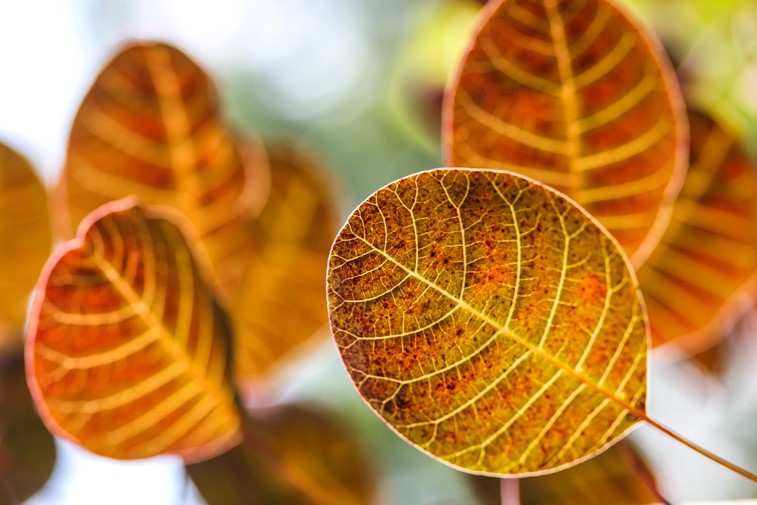
Consider the light. Back lighting is good for patterns, while side lighting is best for textures.
2. Take a step back
Show off the colours in an entire scene with a
wide angle lens. Shoot from a lower viewpoint and try to avoid sky (unless it's blue) to prevent fringing. Paths, lines and long roads will always be excellent for composition. Line them with autumn trees for even better landscapes.
3. Add people
Take advantage of all those leaves in the backyard. Photograph leaf fights. Rake leaves into heaps and have fun. This allows opportunity for spontaneous photos. The colour temperature of the golden light makes it a great time for outdoor portraits.
4. Use a filter
Filters like a polarizer can bring out rich colors by
eliminating the reflections that desaturate them. They can deepen the blue in the sky, or water and increase contrast. Polarizers work best when the lens is at about a 90° angle to the sun. To adjust, rotate the filter while looking through the viewfinder. Contrast and saturation will become stronger, then weaker again, and reflections will come and go. Keep turning the filter until you’re happy with the amount of polarizing, but keep an eye on the sky, as you don't want a harsh or patchy effect. Neutral density filters
stop light to allow for slow shutter speeds, especially helpful on brighter days. You can use a warming filter in the shade or on cold, dark days.
5. Back lighting
Shoot the scene with the light behind the subject to exaggerate the colours and to show off the intricate leaf detail. Use spot metering and increase your exposure by one stop. You can also shoot some Autumn outdoor portraits with back light to make your subject 'pop' from the frame.
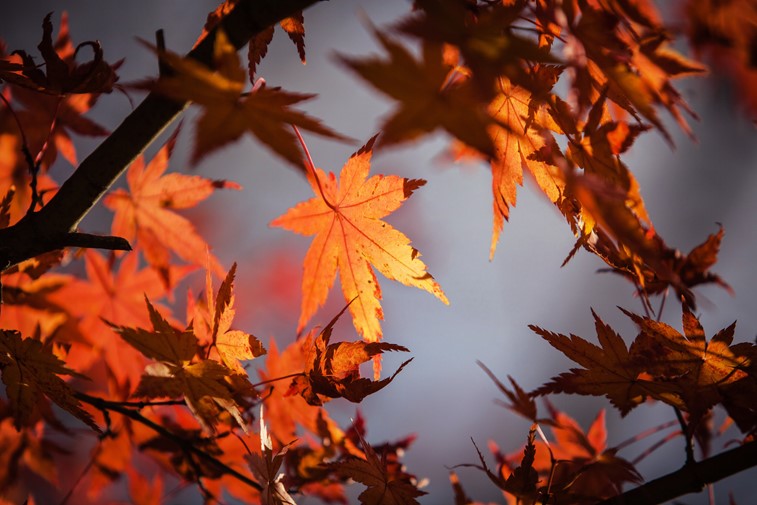 6. Golden Hour
6. Golden Hour
Harsh mid day sunlight creates hard shadows on leaves and desaturates the colours and can result in loss of shadow detail. For warm, bright reds and yellows, take photos on a sunny day just before sunset or after sunrise when the sun is low in the sky, which means the light becomes warmer. If you're using your camera's scene modes, shoot on landscape mode, or in Aperture Priority at f/11, with a
tripod.
Creative tip: When you mix early morning fog with the rising sun you can get beams of light bursting through trees.
7. Abstracts
Instead of focusing on scenes as a whole, look for areas where you can strip your image back to shape, patterns and form which will give you an image that's a bit different.
Why not go against the rule that everything has to be sharp and create an Autumn shutter-drag landscape? The warm shades of leaves which turn into long lines of colour help create beautiful wall art. This creative technique and other images shot using intentional camera movement involves moving the camera during the exposure for an abstract effect. With so many colours, autumn is a good time to experiment. To give this a go, use manual focus so that lens doesn't hunt for focus while you're moving. If you're not shooing in full manual mode, use shutter priority. Set a starting shutter speed at 1 sec (you can experiment until you get the effect you like) and let the camera choose the most suitable aperture. For a smooth blur, start moving the camera first and then fire the shutter midway through the movement. Experiment by moving the camera in any direction
8. Reflections & contrasts
Reflections are something you can shoot all year round but as bright colours and bold shapes make the most interesting reflections, autumn's the perfect season to try this technique. Shoot from wide-angles and mix it up with a longer focal length to get in tighter and isolate portions of the reflections. Look for still pools of water for sharp, mirrorlike reflections, or use a long lens to isolate rocks and sections of moving water that are picking up the reflected color from above. The combination of warm tones from the reflected colour and the cooler tones in the shade also make for a dynamic contrast.
Contrast in an image adds interest. Look for soft foliage against old buildings, bright reds against green or brown, yellow leaves against bright blue sky and light on dark for instance.
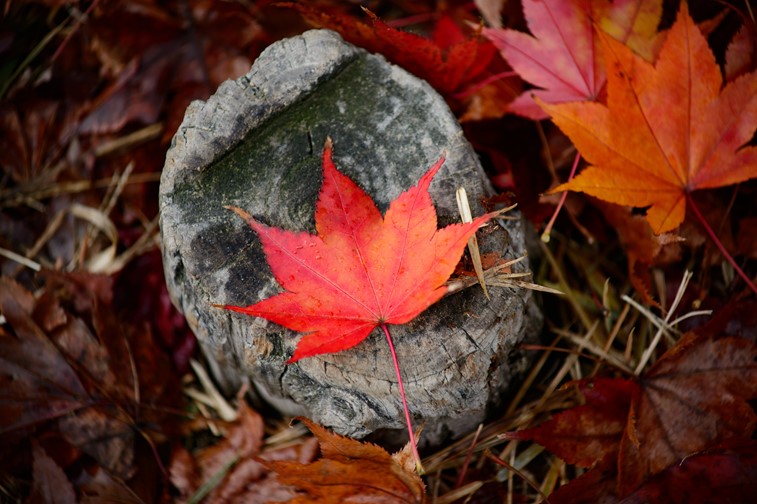
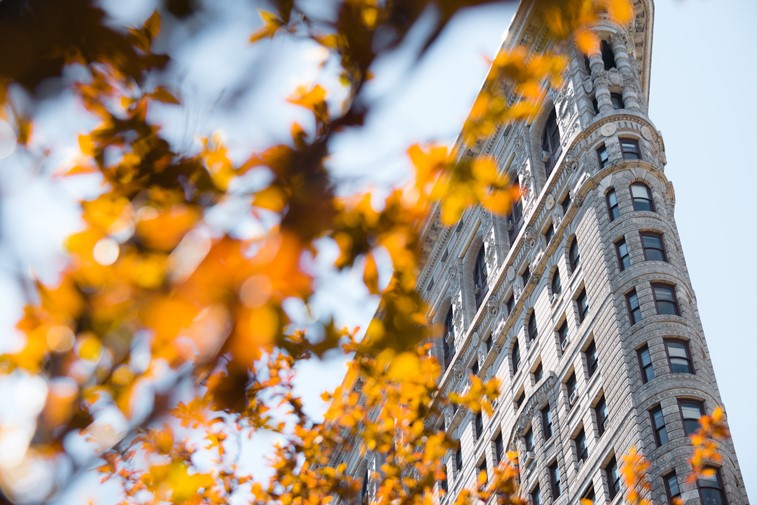 9. Look down
9. Look down
Make the most of the fallen leaves in your landscape shots. If you're near water where leaves are decorating the ground surrounding it or are floating along the surface of the water, experiment with longer exposure times to blur the water's movement. Will you come across mushrooms and toadstools? Get down to their level, and move in close with your lens at a wide-angle setting. Try to find a subject that’s backlit to highlight the delicate structure and colours. Fallen trees can make great subjects, explore them in close-up, or go for a wider view to show them in the context of the bush.
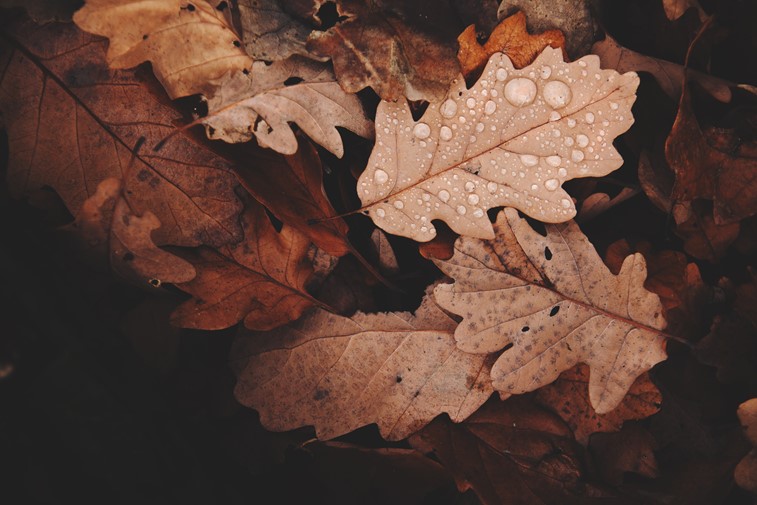 10. Raindrops and dew
10. Raindrops and dew
As the days temperatures fall or before they heat up in the morning, the sight of dew decorating grass, spider's webs and plants can add extra interest to your photos, it's well-worth wrapping in warm layers to get these shots. Early morning mist/fog on rainy days can add an extra environmental twist to our images. Take advantage of beautiful light that often breaks through the clouds after a rainstorm. Raindrops can also result in vibrant colours in beautiful fall foliage. Use a
polarizer to reduce glare on the leaves.